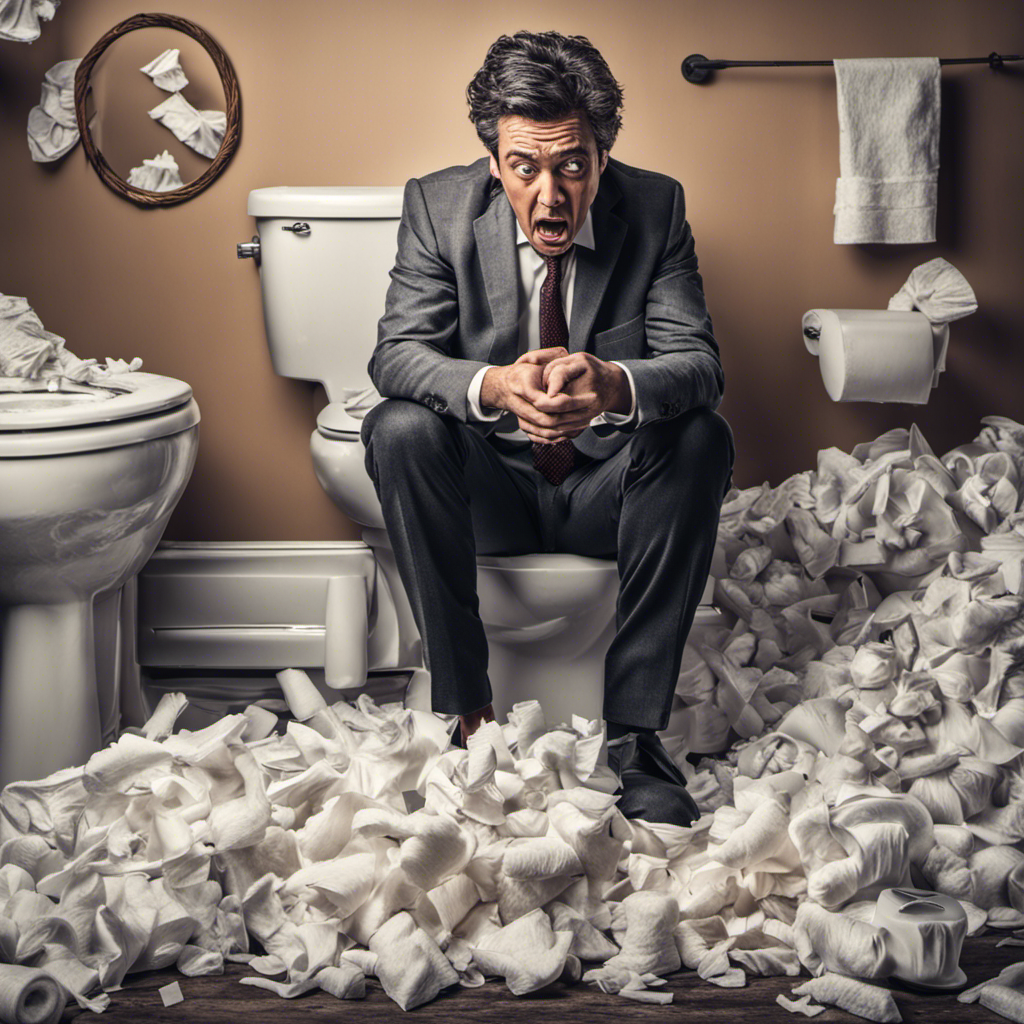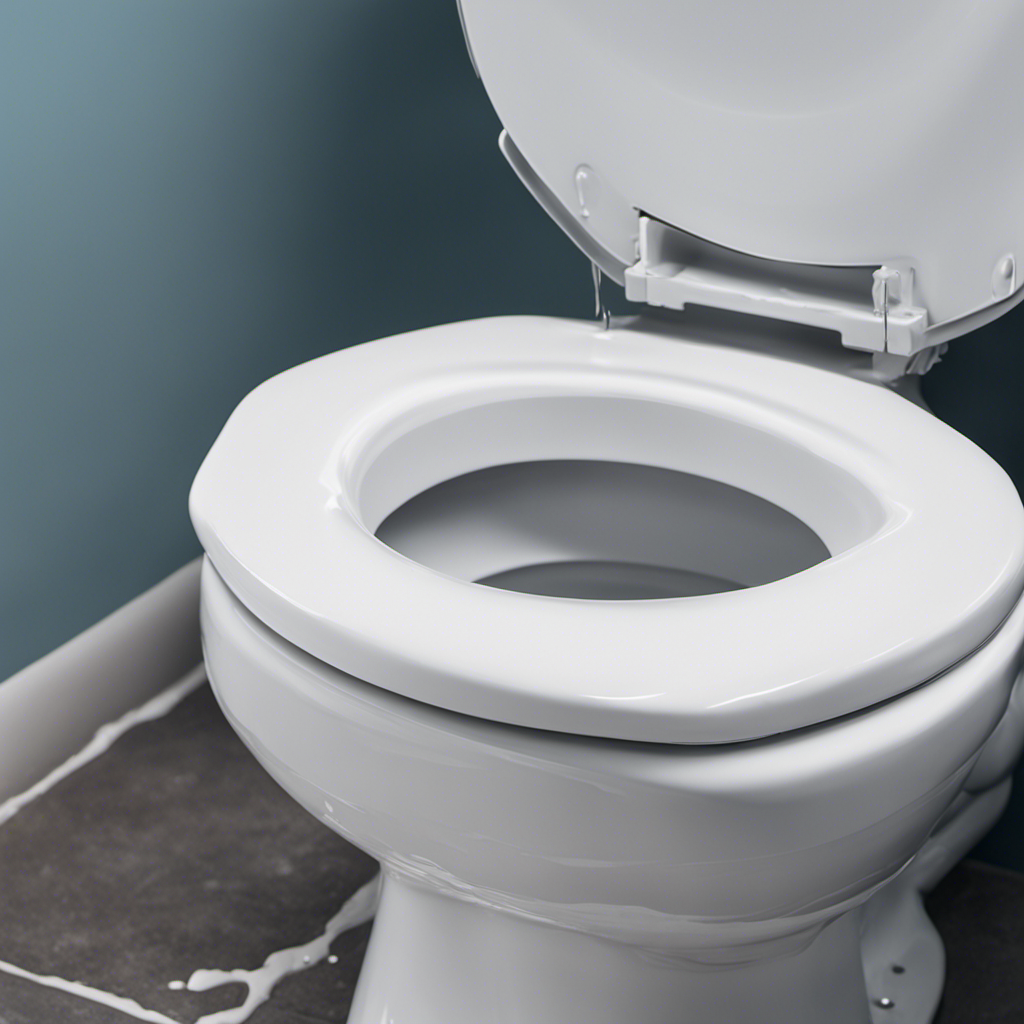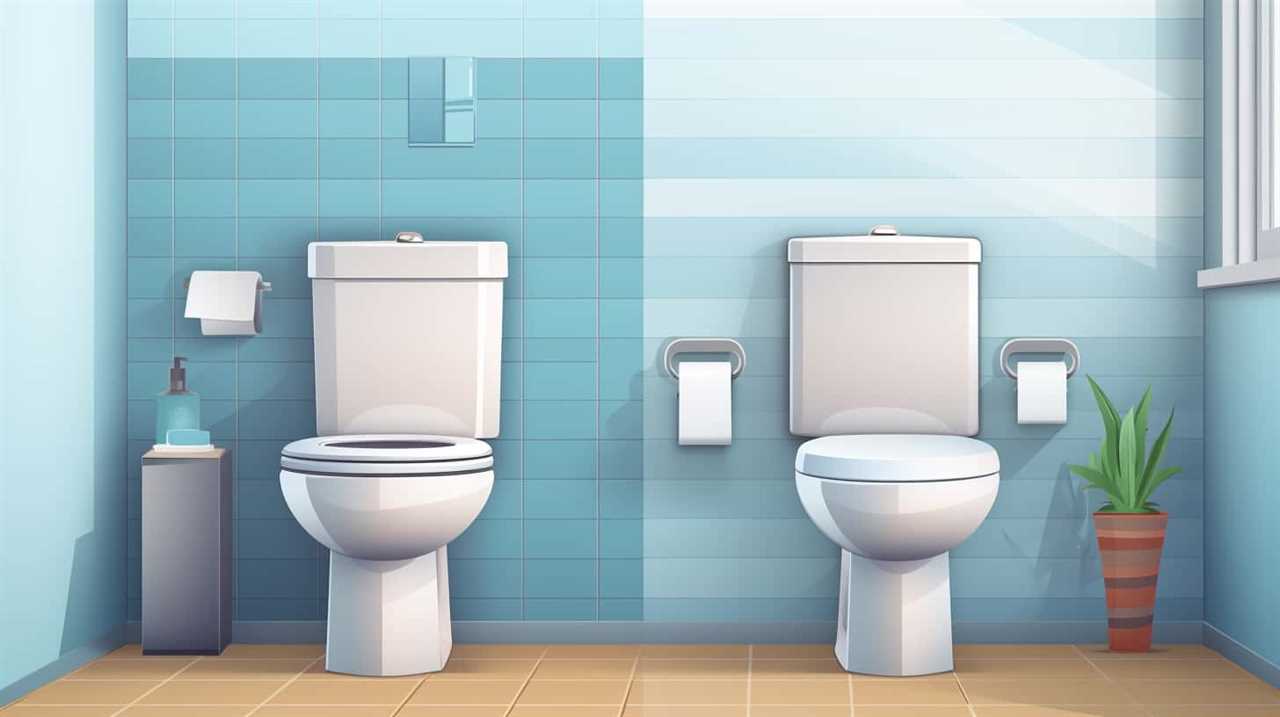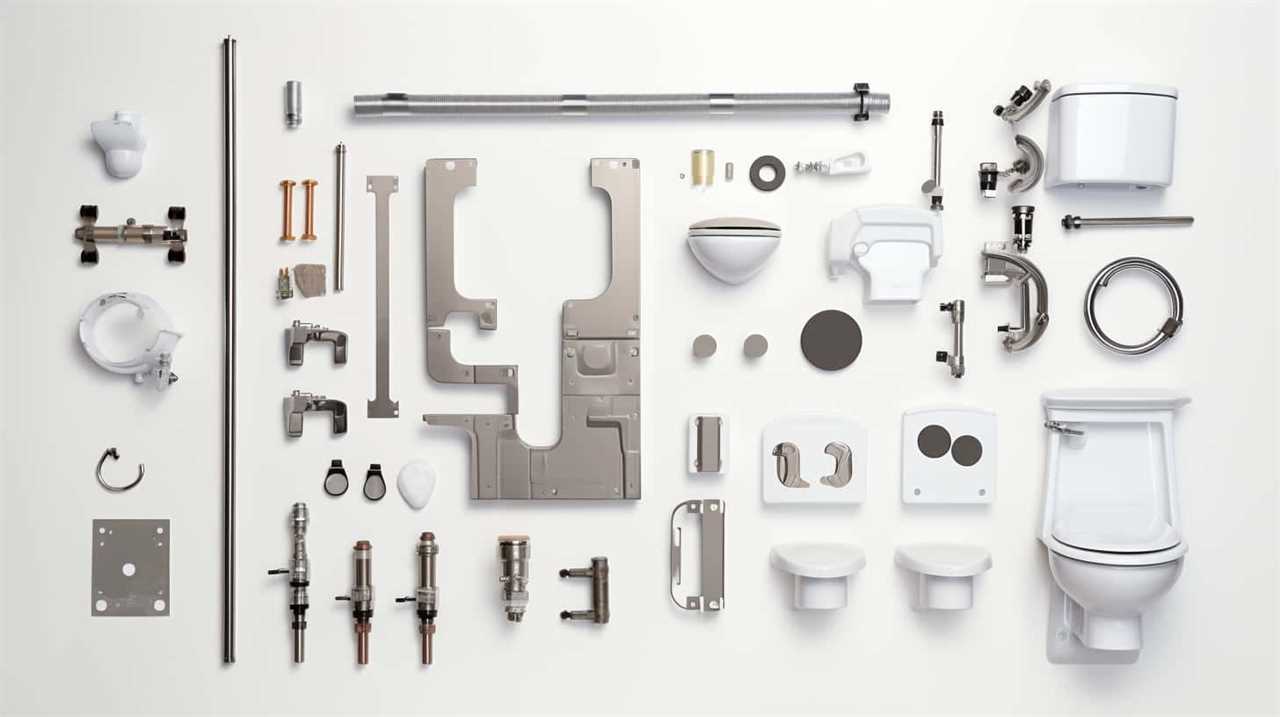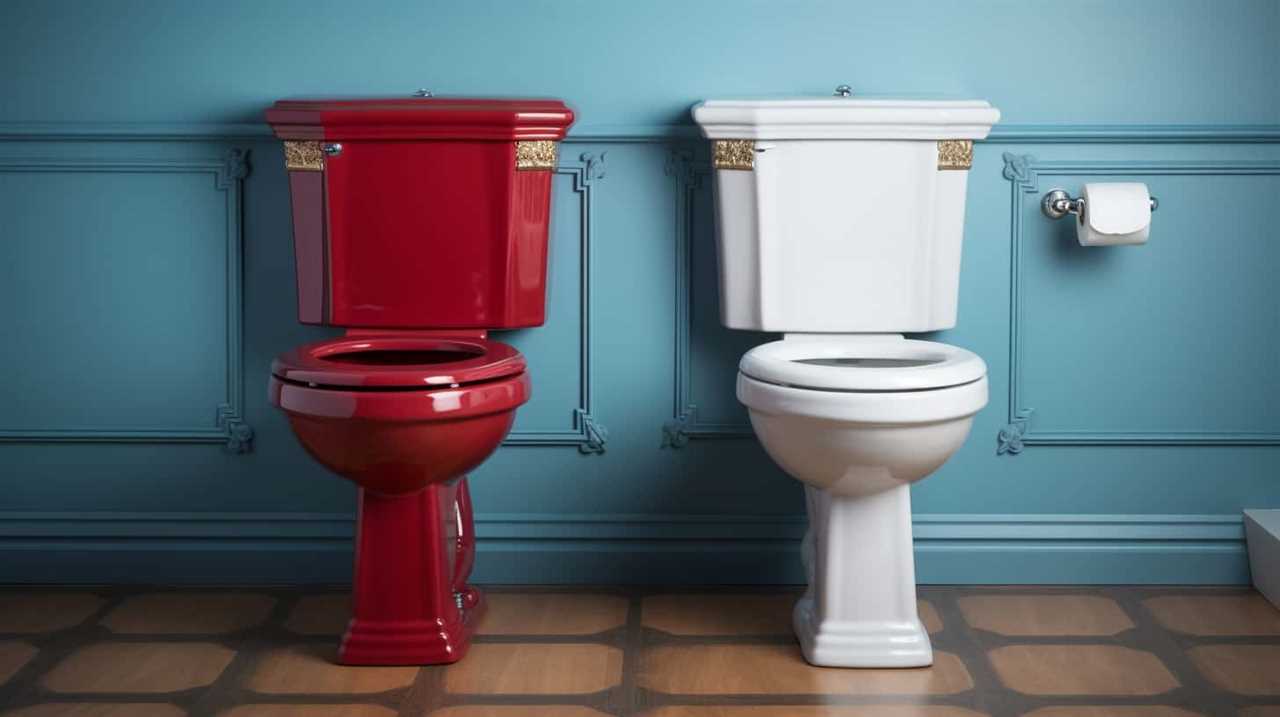Have you ever wondered why your toilet won’t flush? It can be frustrating and inconvenient, especially when you’re in a rush.
In this article, I will guide you through the common causes of a non-flushing toilet and provide detailed steps to troubleshoot and fix the issue.
From identifying a clogged toilet drain to understanding the role of water level in flushing efficiency, you’ll have everything you need to tackle this problem head-on.
Let’s dive in and get your toilet flushing smoothly again.
Key Takeaways
- Clogged toilet flapper and stuck toilet flapper are common causes of a non-flushing toilet.
- Slow drainage and water backing up are signs of a clogged toilet drain.
- Regular maintenance and avoiding flushing non-toilet paper items can help prevent a clogged toilet drain.
- Checking the water level in the tank and adjusting it using the float or fill valve can fix a weak flushing toilet.
Common Causes of a Non-Flushing Toilet
One of the most common reasons why a toilet won’t flush is if there’s a clog in the pipes. When the toilet handle is pressed, it activates the toilet flapper, a rubber valve that controls the water flow from the tank into the toilet bowl. If the toilet flapper is not functioning properly or is stuck, it can prevent the water from being released into the bowl, resulting in a non-flushing toilet.
Another possible cause is clogged pipes. Over time, debris such as toilet paper, hair, and foreign objects can accumulate in the pipes, obstructing the flow of water. This blockage prevents the toilet from flushing properly. In such cases, it is important to address the clog in the pipes to restore the toilet’s functionality.
How to Identify a Clogged Toilet Drain
To identify a clogged toilet drain, you can check for signs such as slow drainage or water backing up. If you notice that your toilet is not flushing properly, it could be a sign of a clogged sewer line.
In order to prevent clogged toilet drains, there are a few steps you can take. Firstly, avoid flushing anything other than toilet paper and human waste down the toilet. This includes items such as wipes, feminine hygiene products, and paper towels.
Additionally, it is important to perform regular maintenance on your toilet, such as cleaning the pipes and checking for any signs of blockage. By taking these preventative measures, you can help ensure that your toilet drains properly and avoid the inconvenience of a clogged sewer line.
Troubleshooting a Faulty Flush Valve
If you notice your toilet not flushing properly, it could be due to a faulty flush valve. Don’t worry, though. Troubleshooting and fixing this issue is relatively simple. Here are three steps you can take to address a faulty flush valve:
-
Check the flapper valve: The flapper valve is responsible for allowing water to flow from the tank into the bowl during a flush. If it’s worn out or damaged, it won’t seal properly, causing water to leak and the toilet not to flush properly. Replacing the flapper valve is usually the solution.
-
Inspect the float mechanism: The float mechanism regulates the water level in the tank. If it’s set too high, the tank won’t fill up enough for a full flush. Adjusting the float mechanism to the correct level can solve this problem.
-
Clean or replace the flush valve seat: Over time, mineral deposits can accumulate on the flush valve seat, preventing a proper seal. Cleaning or replacing the flush valve seat can help restore proper flushing.
Remember to turn off the water supply before attempting any repairs and consult a professional if you’re unsure or uncomfortable with the process.
Steps to Fix a Weak Flushing Toilet
The first step in fixing a weak flushing toilet is to check the water level in the tank. Ensure that the water level is at the designated mark, which is usually indicated by a line on the inside of the tank. If the water level is too low, it may not generate enough force to properly flush the toilet. Adjust the water level by adjusting the float or the fill valve.
If the water level is already at the correct mark, the problem may lie with the flush valve or the flapper. These components can become worn or damaged over time, causing a weak flush. Consider contacting toilet repair services for professional assistance or try DIY toilet maintenance tips to troubleshoot and fix the issue.
Understanding the Role of Water Level in Flushing Efficiency
Ensure that you check the water level in your toilet tank to maintain efficient flushing. This is crucial because the water level directly affects the performance of your toilet’s flushing mechanism.
Here are three key factors to consider:
-
Importance of water pressure in toilet flushing: Adequate water pressure is necessary to create the force needed for a powerful flush. Low water pressure can result in weak or incomplete flushing, leading to clogs and potential plumbing issues.
-
The impact of water conservation on flushing efficiency: While water conservation is important, it can also affect toilet flushing efficiency. Modern toilets are designed to use less water per flush, but if the water level is too low, it may not provide enough force to clear waste effectively.
-
Finding the right balance: It’s essential to strike a balance between water conservation and flushing efficiency. Regularly check the water level in your toilet tank to ensure it is at the recommended level specified by the manufacturer. This will help maintain optimal flushing performance while conserving water.
Conclusion
After investigating the common causes of a non-flushing toilet, identifying a clogged toilet drain, troubleshooting a faulty flush valve, and fixing a weak flushing toilet, it has become clear that the role of water level in flushing efficiency is crucial.
Just as a conductor leads an orchestra to create a harmonious symphony, the water level orchestrates the flawless flush, ensuring a seamless and efficient operation.
By understanding and maintaining the ideal water level, the toilet will dance with grace, flushing with power and precision.
